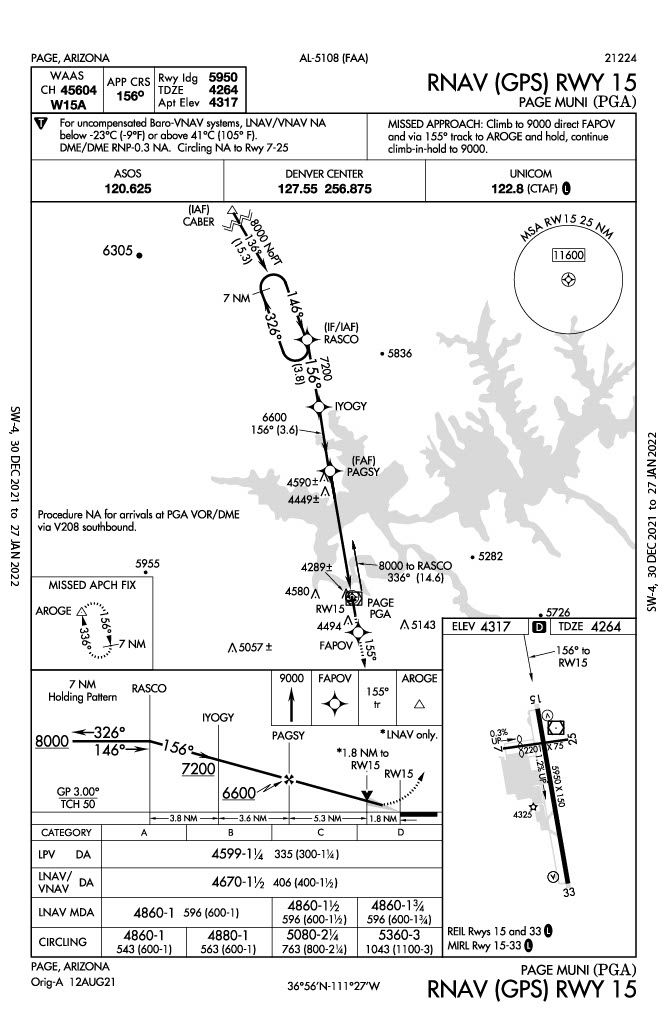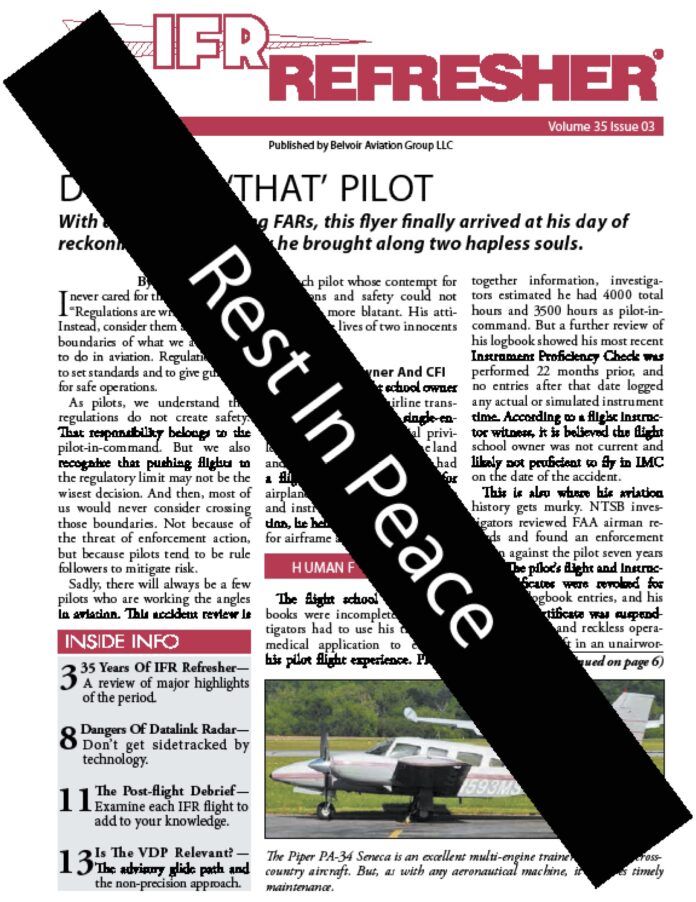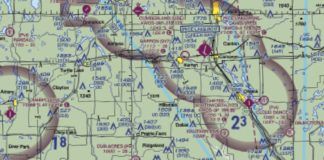More Logging vs. Acting PIC
I’ve been a subscriber to your excellent magazine for about 20 years now, and I always enjoy the care with which you treat regulations, which is why I was surprised to read the text at the top of Bill Dolson’s story “High Altitude Training” in the Jan 2022 issue. The text reads: “To log PIC time in an aircraft that can fly above FL250 you need a high-altitude endorsement.”
This is inaccurate. You can log PIC anytime in an aircraft you are rated for by being the sole manipulator of the controls (61.51(e)(1)(i)), without any endorsement. The requirement in 61.31(g) is clearly for the purpose of acting as pilot in command, which is very different from logging PIC. As an endorsement isn’t a rating, Bill can log the time he spends training for his high altitude endorsement as PIC time under 61.51(e)(1)(i), as long as his CFI is acting as the PIC.
Nadav Eiron
Portola Valley, California
Fair ‘nuff. You’re absolutely right. That’s a subtle, but real distinction. Thanks for catching it, Nadav.
User Waypoint Routing
I have some feedback on Mark Kolber’s “User Waypoint Routing” article, a useful piece, in the December 2021 issue of IFR.
I recently became aware of what appears to be a little-known but fabulously useful feature in ForeFlight. The use cases for it are numerous, but it has a direct bearing (no pun intended) on the article. While it might not change Kolber’s proposed techniques, it certainly augments them.
In dealing with a waypoint defined as a radial and distance relative to a fix or navigation facility (of any type), one can rapidly enter it into a route directly in a matter of seconds. So, for Kolber’s example, the 39-mile fix on the 265-degree radial from the Will Rogers VOR (IRW) is entered into ForeFlight’s FPL dialogue box where routes are entered, simply as “IRW/265/39,” and you have your waypoint in your routing. It’s astonishingly quick and easy. It even works from the search box on the top right of the main ForeFlight Maps screen.
Jonathan Tager
Singapore
IFRR, Wherefore Art Thou?
I know you discontinued the IFR Refresher magazine, but do you have a digital archive available to former subscribers (and current subscriber to IFR Magazine)?
Malcolm Nathan
Malden, Massachusetts
Others have asked this same question and unfortunately the answer is no. When the title was discontinued due to declining subscriptions, all IFR Refresher presence was removed from the web by the publisher. There have been internal discussions about making the archives available, but the publisher determined that wasn’t practical.
A Promise Kept
In my April 2022 article, “Coping with CAMI,” I quoted Dr. Susan Northrup’s promise in
November 2021 that we would soon be able to see the status of our medical certificate applications in the FAA system.

On April 20, 2022, Dr. Northrup delivered on her pledge. MedXpress now has a new feature that lets an applicant track the status of their application as it wends its way through the certification process after it was submitted. This transparency will significantly reduce uncertainty about the status of an application and hopefully even largely eliminate the need to call to check.
Official communication such as a deferral or denial will remain by mail. There is no change to the certification process.
You’ll find the announcement at the FAA website. Click “News” on the top, then find the April 20, 2022 item, “Pilots Now Able to Track Medical Applications in Real-Time.”
Fred Simonds
IFR Contributing Editor
Uh … So What?
In May’s “Take Your Time,” Ms. Kauh spends a lot of time calculating the missed approach climb gradient for the RNAV 15 at Page, Arizona. She’s concerned that a slow climber might not reach 9000 by FAPOV. “That’s close to the target altitude, so by the time you fly the parallel entry, you should be at 9000. But that puts you nearly 10 miles away from the airport, which out there is the middle of no‐where.”
She then discusses the VOR approach, and how the missed approach keeps the plane closer to the field. I’m sorry, but I don’t see her concern about flying the missed approach as published. After coming all the way from Pueblo, why the concern about being a few miles away from the field? What am I missing?
David Weeks
Location withheld
We note that the pilot in the article hasn’t had much time flying this model in those conditions, so a performance review is prudent. Even pilots with lots of hours in their own aircraft don’t always seem familiar enough with performance. So they might make general assumptions or only look at the POH if something is clearly questionable. Confirming what you assume is prudent.
Regarding comparing missed approach/holding locations, a review of all procedures at a destination is often overlooked. This pilot chose a procedure that many of us flying RNAV would not have known is available. The option to fly a published hold over the airport can save time, ATC radio dialogue, and fuel, and mitigates the risk of a power failure further away.
So the takeaway: Get the full picture for aircraft, environment, and procedures, even if there are options you don’t need or want in the end.





